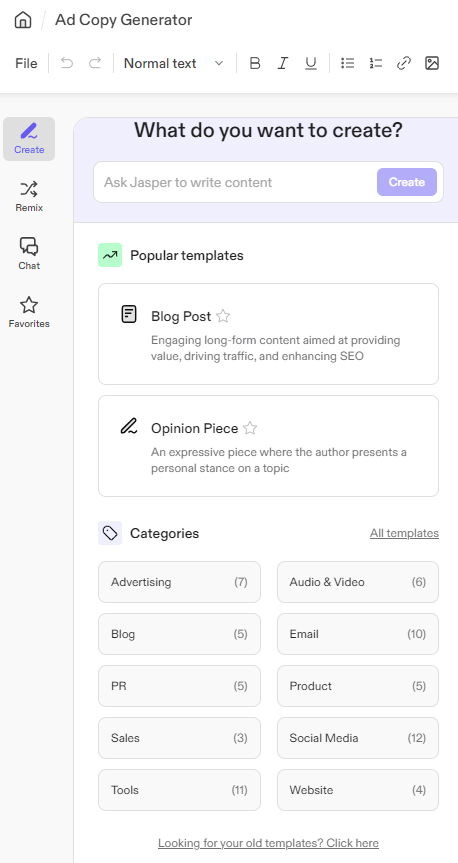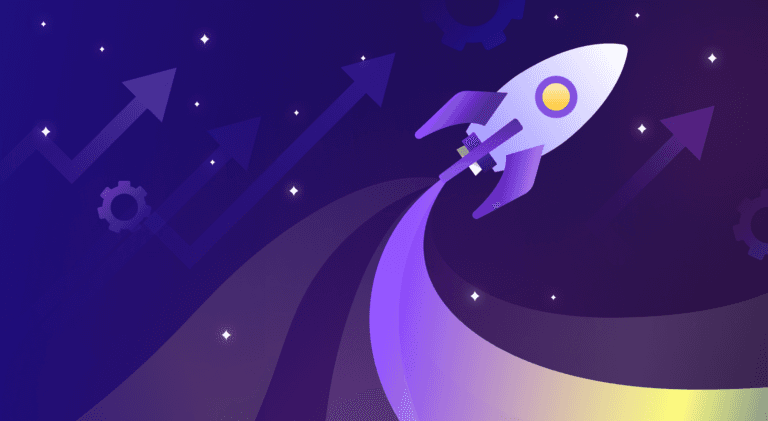Why AI Copy Generators Are Improving Content Creation Efficiency

Imagine having a personal assistant who can write your blogs, draft your ad copy, create engaging social media posts, and generate unique fonts. It is amazing how AI tools have gone from doing just about any content creation work in no time to being irreplaceable. Be it driving productivity or fuelling creativity – it is apparent that AI is changing the rules of the games. Let’s explore how AI-driven tools refine content creation through copy generators and ad copy generators.
What is a Copy Generator?
A copy generator is an AI-powered tool that generates written content from predefined parameters. These tools utilize natural language processing and machine learning algorithms to understand context, tone, and target audiences.
Copy generators can create blog posts, social media updates, email newsletters, and more. The tool saves time and helps with consistency in tone and style through different copy-and-paste options. A copy generator can be a valuable asset for businesses that want to scale their content efforts without compromising quality.

The Emergence of the Copy and Paste Font Generator
Some AI-powered tools do more than copywriting—they can create custom fonts using a copy and paste font generator that users can easily transfer into digital platforms. This might seem basic until you consider how popular these tools are with social media users and designers who want to add creative flair without spending hours crafting fonts.
The copy and paste font generator offers everything from bold and italic styles to more intricate options like cursive and block letters. This tool has become a go-to option for creatives looking to stand out online, helping them use unique text that grabs attention in a crowded digital space.
Understanding the Copyright Generator
While creating content has become easier with each new day, protecting intellectual property rights is equally important. In this regard, the copyright generator offers the needed support. An AI-driven copyright generator automatically generates copyright notices and disclaimers of ownership for creators, helping them retain ownership and control over the created works.
These further secure the digital assets through originality analysis, which ensures copyright laws are not violated. This helps businesses and individuals who publish content online regularly and wish to protect their intellectual property to prevent unauthorized use or duplication.
Ad Copy Generators and Their Role in Marketing
Advertising is an important part of any effective marketing strategy. The only way to gain the attention of targeted customers is by writing eye-catching ad copies. Traditionally, ad copywriting demands a large amount of time and creativity, but ad copy generators can make ad content more engaging and persuasive with speed.
AI analyzes successful ad campaigns, identifies the key trends, and writes optimized ad copy with this generator that truly resonates with the target audience. Such tools can create several ad formats, including but not limited to headlines, descriptions, and actions tailored to maximize conversions and drive results. By leveraging the power of AI, businesses can make sure that their advertising is both effective and cost-efficient.
On a side note, there’s also a lighter side to copy generators, such as the Copypasta generator. Copypasta refers to blocks of text that are copy-pasted across the internet, often used to create humor or meme-worthy moments. Copypasta generator is often used to create funny, offbeat text snippets that people can easily share on social media, forums, or chats. These generators are designed for entertainment and don’t necessarily employ AI but assist in creating copies with added effects.

Pitfalls of AI Copy Generator
While AI has made content creation faster and more efficient, it also introduces challenges that users need to be aware of. One significant concern is the potential for plagiarism or copyright infringement, especially when AI is used to generate copyright notices.
For example, if an AI tool is used to create written or visual content, there’s a risk that the tool could unintentionally produce work that closely resembles existing copyrighted material. This could happen because AI models are often trained on vast amounts of data, including copyrighted works, and reproduce similar patterns, phrases, or styles. If users aren’t careful, they might unknowingly use content that violates copyright laws, leading to legal consequences.
Even with tools that automate the generation of copyright notices, users need to understand that these tools don’t handle the legal complexities of copyright law on their own. Copyright laws vary by region and simply automating a notice doesn’t protect you from legal risks. For example, claiming copyright over material that isn’t entirely original or not properly licensed could lead to disputes or penalties.
To avoid these issues, users should:
- Familiarize themselves with copyright laws relevant to their content.
- Double-check AI-generated content for originality using plagiarism detection tools.
- Ensure that any automated copyright notices are accurate and legally sound.
In short, while AI can streamline content creation, users must stay informed about copyright laws to avoid unintended violations.
Another consideration is the quality of content provided by AI tools. Copy generators and ad copy generators may not always capture nuances and creativity the way a human writer can. So, businesses should use AI to complement human creativity, not replace it.
Finally, there is the aspect of data privacy and security. Most AI tools need volumes of data to work properly. This again raises concerns about how this information is compiled, stored, and used. Businesses have to ensure that they make use of AI tools that apply high standards in the protection of data privacy and security to safeguard sensitive information.
AI is by no means a passing phase, but an influential tool. If utilized correctly, it will drastically improve communication and connection in the coming decades. As innovations of these technologies continue to evolve and improve, creativity in content creation will become limitless.
Ultimately, AI in copy generation provides a significant boost in augmenting human creativity and managing the content creation process. Embracing these tools empowers businesses and individuals to unlock new levels of efficiency and innovation in ways that might just change how we create and consume content. This rise of AI in content creation has brought about a paradigm shift in how written material is generated and disseminated.
Finally, while using these tools it’s best to remember their limitations and some ethical considerations. That way, we can enable AI to create high-quality, engaging content that resonates with audiences and drives impactful results.
If you are looking to streamline your content creation process, check out Pepper’s Content Marketing Platform; learn more by booking a demo today!
Latest Blogs
Explore how Google’s 2025 AI search updates triggered ranking chaos. Learn actionable strategies to adapt your SEO for AI Overviews, zero-click searches, and SERP volatility. Stay ahead now.
Learn how to rank on AI search engines like ChatGPT, Perplexity, and Gemini by optimizing your content for authority, structure, and relevance. Stay ahead in AI-driven search with this strategic guide.
Explore the best healthcare SEO services for your medical practice. Improve online visibility and effectively reach more patients in need of your services.
Get your hands on the latest news!
Similar Posts
Artificial Intelligence
3 mins read
How to Rank on ChatGPT, Perplexity, and Gemini: A Strategic Guide for Marketers

Artificial Intelligence
5 mins read
How Free AI Tools for Content Creation Can Boost Your Content Strategy

Artificial Intelligence
5 mins read